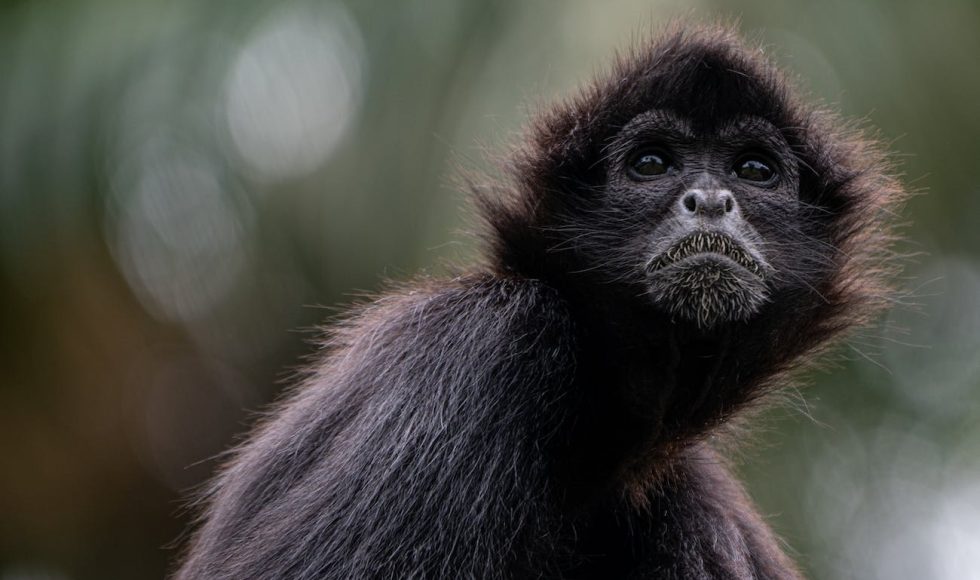Gabriela Pozo spoke at the Nanopore Community Meeting 2022 about “Whole-genome sequencing of the Ecuadorian brown-headed spider monkey (Ateles fusciceps fusciceps), a critically endangered species. Pozo is from the Universidad San Francisco de Quito, Ecuador. Pozo mentioned that this is a diurnal primate, with a mostly ripe fruit diet and also mushrooms and insects, and they live in groups. Pozo said they have a life expectancy of about 24 years, and females birth one individual. They can move up to 3 km in a day! They live in humid tropical and subtropical forests of Northwestern Ecuador, explained Pozo. They are not find near human habitats. Deforestation of the rainforests is a threat as well as hunting. The IUCN Red List, mentioned Pozo, classifies this species as critically endangered, and in 2018 only 280 individuals estimated. I never thought about how because they have a drastically reduced population, they are inbred and have suffered a loss of genetic diversity. Pozo explained that management approaches must take into account genetic factors. Pozo also talked about how genomic studies are now being used for conservation efforts, as they can estimate genetic diversity, population structure, and demographic history. Pozo’s study had the objective of sequencing and assembling the genome of the Ecuadorian brown-headed spider monkey using Oxford Nanopore Technologies. They sampled a monkey named Mishki and stored the blood sample at -80 degrees Celsius until they had all the genetic permits in order to extract the DNA. They extracted DNA from the blood using the QIAGEN Blood and Tissue kit and then used the ligation sequencing kit to prepare libraries for Oxford Nanopore Sequencing. Pozo explained that they used six flow cells and used a M1kc They removed adapters with Porechop and Nanoplot. The assembly was done with Flye, and Minimap2 was used to map to a reference genome of a black handed spider monkey. Medaka was used for assembly polishing followed by gene prediction with Maker and Busco. Their results include 15 extractions and DNA ranging from 13-78 ng/ul. Pozo explained that they took into account reads with at least Q7. They had close to 9 million reads with a mean length of 6,244.5 and Q10. The N50 read length was 12,971 and the estimated read coverage was 21.5X. Pozo did note that it is a large genome, and they wanted at least 20X coverage. Their assembly with SMARTdenovo resulted in a total length after polishing of about 2.5 Gbases. Busco found or was able to predict 77% of the genes. Next, they will use Flye and polish. Pozo explained that they will try scaffolding and, if necessary, use Illumina sequencers. Pozo spoke about working in Ecuador and how ONT MinION devices increase access to sequencing. I learned with this session about sequencing monkey genomes!



